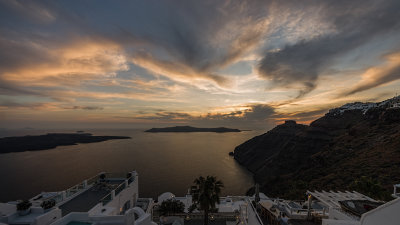Shane Burton
Active member
ok thank you Dave
Follow along with the video below to see how to install our site as a web app on your home screen.
Note: This feature may not be available in some browsers.
There are many tips on cleaning the sensor here on the forum. But the basics are not trying to swap lenses in dodgy conditions - sand, windy, rainy etc. and always face the camera down whilst doing that.My sensor must be dirty , it wasn't raining at the time.
I love what you did thats exactly the type of cloudy weather we have had lately.
As people have said, there are several things you can do better when taking the photo. But there is a lot more detail in the basic file if you know how to get to it. This isn't the place for a big lesson on processing - that's something you'll need to develop slowly - but here's something to show what you could pull out with a bit of practice.

Hi Larry,Wow Gerry that is such an improvment. Maybe one day I will be able to do that.
I also use LightRoom, but even Picasa will do a satisfactory fix in seconds, certainly good enough to demonstrate an effect for DPR. Slowest part is the download/Upload.You'd be amazed how easy it is to make improvements. It all depends on what pp software you have of course, I use Lightroom, but I think you could be doing something inside a few days.Wow Gerry that is such an improvment. Maybe one day I will be able to do that.
You're doing exactly what you need to do in order to learnThank you for your feedback. First I thought that by using f22 my picture would be sharp throughout the picture. Second I read when shooting in cloudy conditions bump up your ISO.
I'm going to go take another picture and post using the information you explained so good.
I see my camera shooting skills are pretty shabby after talking to you. Thank you again so much for the info.
Larry
It looks a bit overexposed to me. Have you tried some of the free photo programs like Picasa?
Good afternoon LynniePad, I have been practicing different suggestions from this post. I don't have any way to do a post correction on my photos. What do you think I could have done different in taking this photo?
Try this site; some others are not trustworthy: http://picasa.google.com.au/I am fixing to look Picasa up. Thanks again
If it was sunny, you would shoot this at F16, 1/100 sec, iso 100.Your shot is 1 stop overexposed if it was sunny, but it was cloudy. I would have shot it as F11, 1/60 sec, iso 100. And if slightly underexposed, when viewing the histogram, I would add + 1/3 ev as necessary.
This picture apears not as sharp as I thought it would. This is a field of soybeans, I was shooting im manual ISO 500, WB set to cloudy, aperature was f22. I am shooting with a Canon 60D with a 15-85 lens.Can someone give me some on input on what I could have done different?
Thanks
Larry
Slow shutter would likely be a problem at f/22; depending on ISO and image stabilisation, of course.Hello Mike,
I have a question about the apertures. I too am a beginner & I was out walking around trying to learn the correlation of ISO/aperture/shutter speed. I was using some small apertures, i.e. f16-22. My photos were not tack sharp. I think my shutter was too slow, or my hands were unsteady. But I was told diffraction was the problem.
I was using those apertures because I wanted a large DoF. I have been reading some photo magazines, one in front of me now & he's got a gorgeous photo using f/29! He was also using a tripod (I don't have one yet). How does he use such a small aperture & have such a beautifully sharp image?
